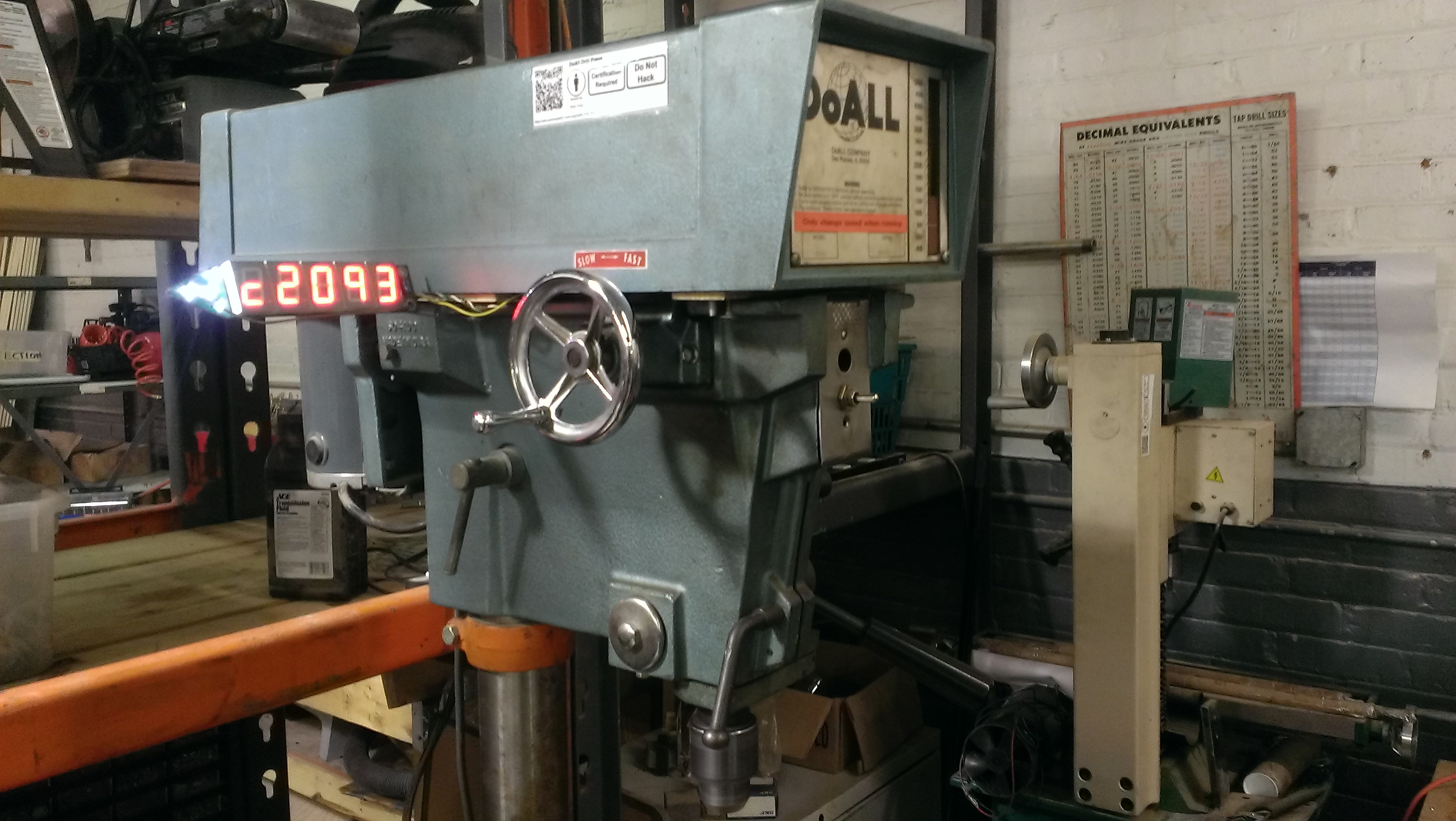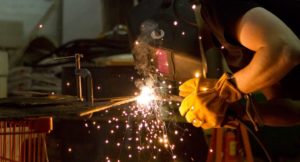There’s a big bin of 5 digit, 7-segment displays sitting in our electronics lab. It’s the sort of thing that cries out for a project. I found one that’s the perfect shape for a digital speed readout for our big drill press, whose mechanical RPM indicator was broken.
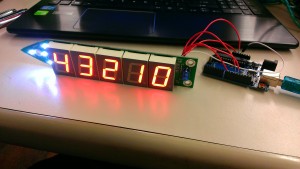
The display was pretty simple to reverse-engineer. There’s a header on the back that’s connected directly to the relevant pins on the first shift register. Apply power, fire up a basic sketch built around shiftOut(), and away we go.
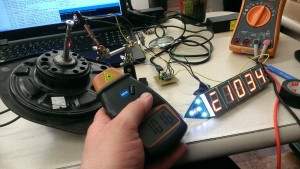
My code (patches welcome!) is not terribly complex. Basically I use a Hall effect sensor to trigger an interrupt every time a magnet glued to a wheel in the drill press passes. The time between interrupts is used to calculate RPM.
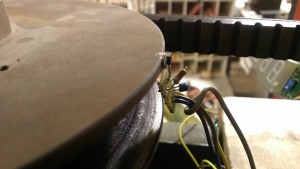
All told, I spent maybe four or five hours on this project. It’s probably the simplest possible solution to the problem, and my total investment is less than $10 in parts. And we’ve got an accurate readout of the speed of this big drill press.
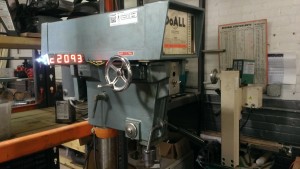
I’m out
-loans

